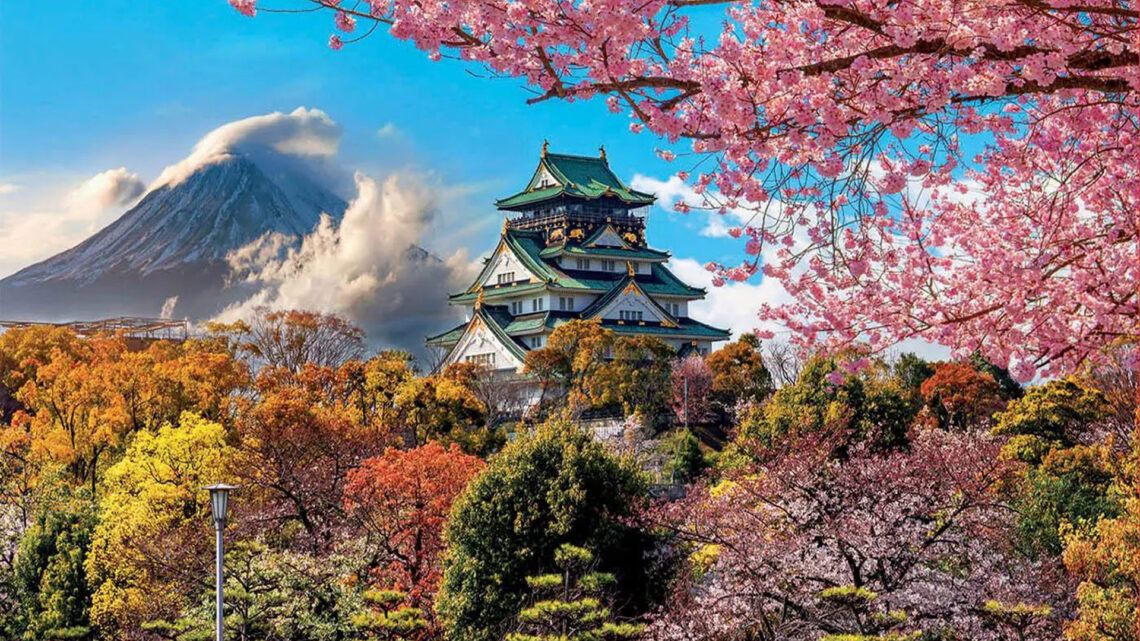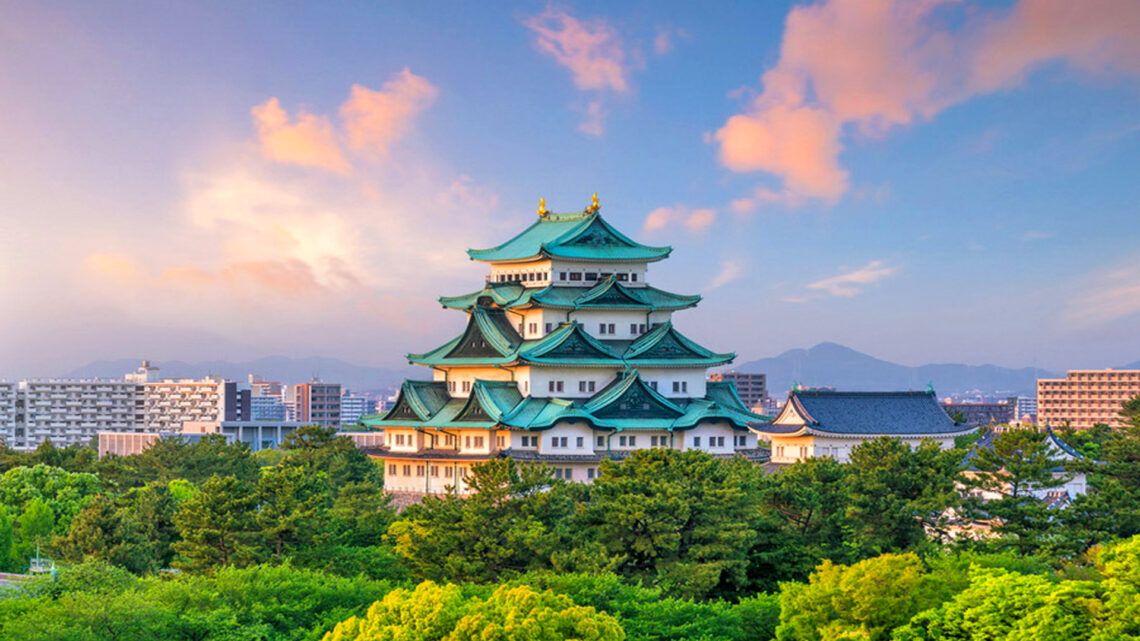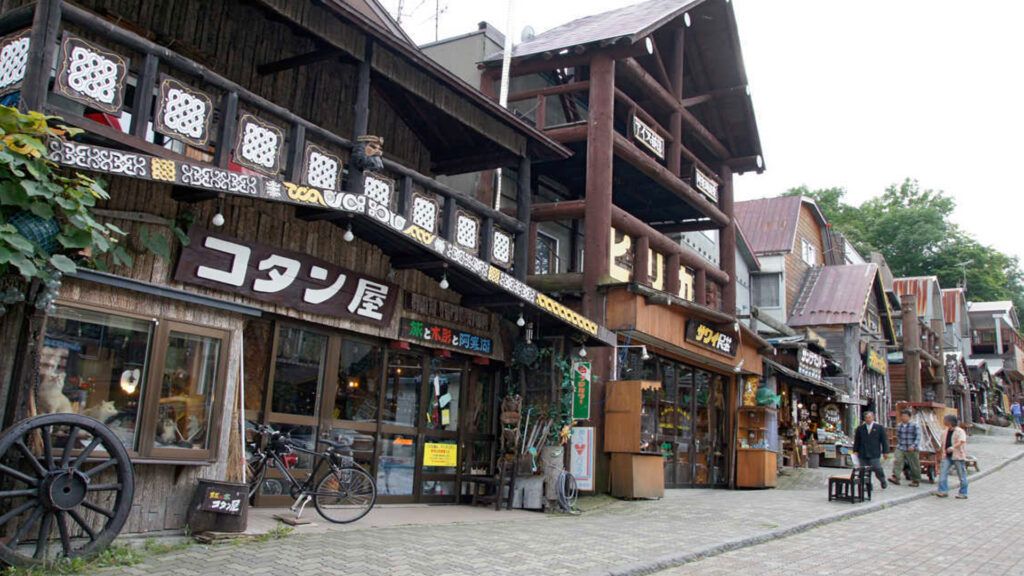
Akanko Ainu Kotan: Culture and History of the Ainu
Akanko Ainu Kotan is a cultural gem on Hokkaido, Japan, offering a fascinating insight into the life and traditions of the Ainu, the indigenous people of Hokkaido. This community, long marginalized in Japanese society, has developed a rich and unique culture deeply rooted in nature and spirituality.
The Ainu are the original inhabitants of Hokkaido, the northernmost of Japan’s four main islands. Their history spans thousands of years. At Akanko Ainu Kotan, a recreated traditional village, visitors can experience this impressive history and culture firsthand. The village features a variety of activities and attractions that preserve and promote Ainu heritage.
Located on the shores of the beautiful Lake Akan, the village is surrounded by dense forests and majestic mountains, enhancing its mystical atmosphere. Visitors can explore traditional Ainu houses, known as “Chise,” constructed from natural materials like wood and straw, reflecting the Ainu’s deep connection to nature.
A central aspect of Ainu culture is their animistic religion. The Ainu believe that all things, whether alive or not, possess a spirit or soul called “Kamuy.” These spirits play a crucial role in the Ainu’s daily life and rituals. At Akanko Ainu Kotan, visitors can participate in ceremonies and dances held in honor of the Kamuy, which are both spiritually significant and aesthetically beautiful.
The Ainu are also known for their intricate handicrafts. The village hosts numerous workshops where traditional Ainu artworks can be admired and purchased, including finely carved wooden items, richly embroidered textiles, and impressive masks. These crafts not only showcase the Ainu’s creative skills but also serve as vital means of preserving and transmitting their culture.
Another highlight of Akanko Ainu Kotan is the Ainu Theater “Ikor,” where regular performances of traditional Ainu music and dance take place. These performances provide a lively glimpse into Ainu cultural expressions. The music primarily features traditional instruments like the Mukkuri, a mouth harp, and the Tonkori, a string instrument. The dances, often accompanied by singing, narrate stories from Ainu mythology and daily life.
Food also plays a central role in the cultural experience at Akanko Ainu Kotan. Visitors can sample traditional Ainu dishes made from local ingredients. Ainu cuisine is simple yet nutritious, reflecting the natural resources available to them. Typical dishes include fish, game meat, berries, and wild plants. A notable delicacy is “Ohaw,” a hearty soup often made with game meat and vegetables.
Education is highly valued at Akanko Ainu Kotan. Several exhibitions and museums provide extensive documentation on Ainu history, language, and culture. These facilities offer a wealth of information and are invaluable resources for anyone interested in learning more about this fascinating culture. The “Ainu Folklore Museum” stands out, presenting a comprehensive collection of artifacts and documentation on Ainu history.
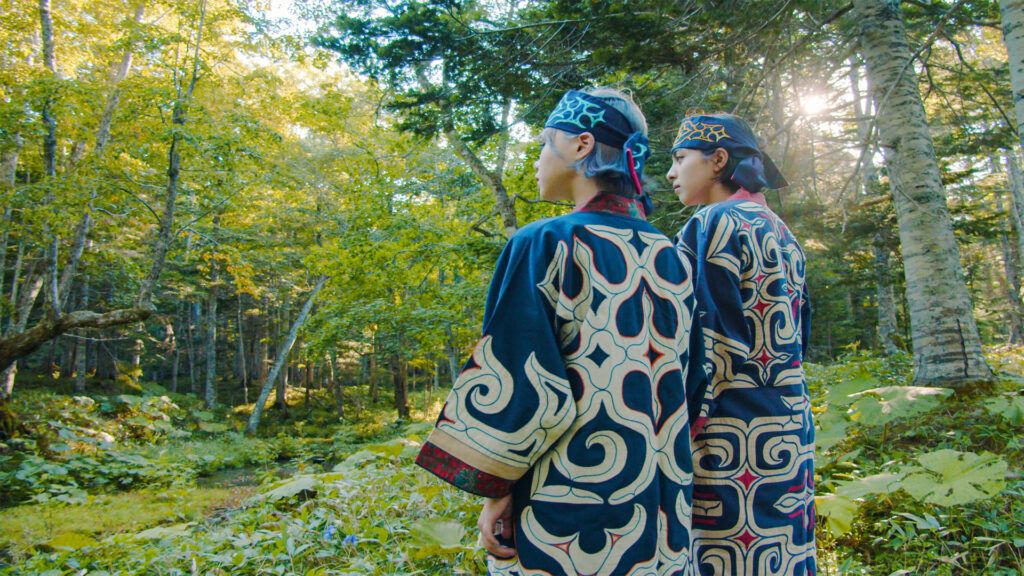
In addition to cultural and historical aspects, Akanko Ainu Kotan offers numerous outdoor activities. The nearby Akan National Park invites hiking and nature observation, allowing visitors to explore Hokkaido’s diverse flora and fauna while enjoying the stunning landscape. Lake Akan itself is famous for its Marimo algae, which form spherical colonies and are found in only a few lakes worldwide.
Akanko Ainu Kotan is a vibrant example of how the Ainu community preserves their traditions and heritage while welcoming visitors interested in their culture. It is a place where history comes alive, fostering a dialogue between the past and the present. By visiting this village, people from around the world can learn about the rich culture of the Ainu and contribute to its preservation for future generations.
A visit to Akanko Ainu Kotan is not just a journey into the past but also an opportunity to experience the living and dynamic culture of the Ainu. It is a place of encounter and exchange, demonstrating the importance of respecting and promoting cultural diversity. The Ainu culture, with its deep connection to nature and rich traditions, offers valuable lessons for all, especially in a time when sustainability and environmental protection are of great importance.
Overall, Akanko Ainu Kotan is more than just a tourist attraction; it is a living testament to the resilience and creativity of the Ainu community. It invites visitors to delve deeper into the fascinating world of the Ainu and discover the beauty and wisdom of their culture. It is a place where the past remains impressively present while building a bridge to the future.
The Geographical Location of Akanko Ainu Kotan
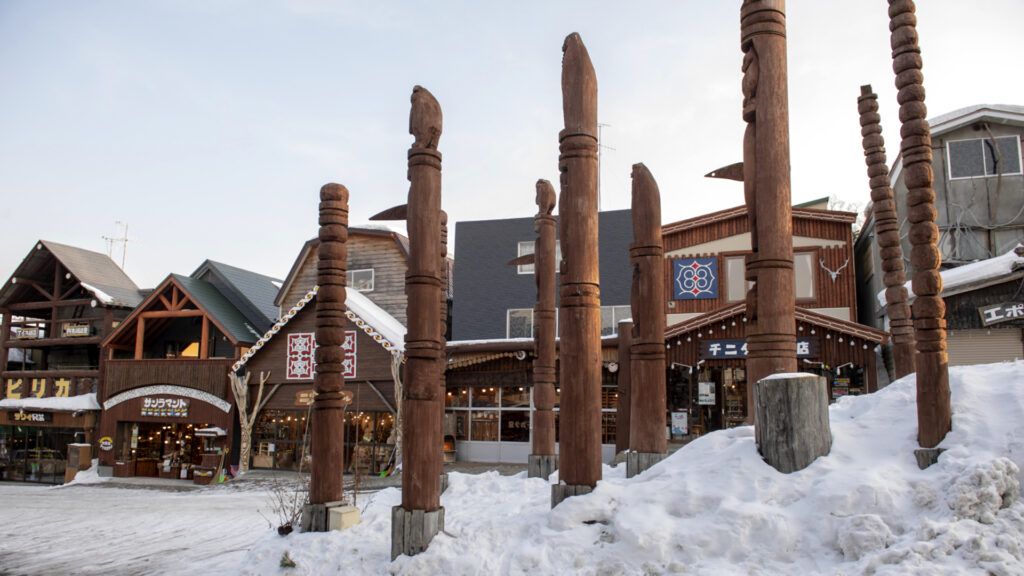
Akanko Ainu Kotan is situated on the shore of Lake Akan in eastern Hokkaido, Japan. This geographical location is not only scenically beautiful but also of historical and cultural significance. Hokkaido, Japan’s second-largest island, is renowned for its pristine nature, expansive forests, mountains, and lakes. Lake Akan itself is a volcanic crater lake located in Akan National Park, one of Japan’s oldest national parks. The surrounding area boasts an impressive variety of flora and fauna that have long influenced the life and culture of the Ainu.
Lake Akan, known as Akan-ko in Japanese, covers about 13 square kilometers and is up to 45 meters deep. The lake is famous for its Marimo algae, which form spherical colonies and are considered a natural treasure of Japan. These unique algae are not only a botanical wonder but also a symbol of the region’s purity and ecological balance. The lake is fed by the surrounding mountains, including Mount Oakan and Mount Meakan, two active volcanoes that dominate the landscape.
The area around Lake Akan is a paradise for nature lovers and adventurers. The Akan National Park, which surrounds the lake, spans over 90,000 hectares and offers a variety of outdoor activities. Hiking trails wind through dense forests, along rivers, and up to the summits of the volcanoes, providing breathtaking views of the surrounding landscape. In winter, the region becomes a popular destination for skiing and snowboarding, while the hot springs (onsen) attract visitors year-round seeking relaxation and rejuvenation.
The climate in the region is characterized by cold winters and mild summers. The winter months are snowy, transforming the landscape into a picturesque winter wonderland. The summers are pleasantly cool, making them ideal for outdoor activities. These climatic conditions have significantly influenced the lifestyle of the Ainu, who have perfectly adapted to the harsh environmental conditions. The natural environment plays a central role in Ainu culture, which maintains a deep spiritual connection to its surroundings.
The dense forests around Lake Akan are home to numerous animal species, including bears, deer, and various bird species. This wildlife is not only an important part of the ecosystem but also deeply rooted in Ainu mythology and folklore. The Ainu believe that many animals are divine beings that must be respected and honored. This deep connection to nature is reflected in their customs, rituals, and stories.
The geographical location of Akanko Ainu Kotan makes it an ideal place to experience the natural beauty and cultural depth of Hokkaido. Visitors have the opportunity to not only enjoy the stunning landscape but also immerse themselves in the rich culture and history of the Ainu. The proximity to volcanoes and hot springs offers unique experiences that highlight the connection between humans and nature.
The region is also known for its distinctive geological features. The volcanic activity has created numerous hot springs, known as onsen. These hot springs are not only a popular tourist destination but also have a long tradition in Ainu culture as places of healing and relaxation. The mineral-rich water of the onsen is valued for its therapeutic properties, providing a welcome respite after a day of exploring nature.
In addition to the natural and geological features, the area around Lake Akan offers cultural attractions. Akanko Ainu Kotan itself is a cultural center that gives visitors deep insight into the life and traditions of the Ainu. The various craft shops, museums, and theaters in the village offer a range of experiences that make the rich cultural heritage of the Ainu accessible.
The geographical location of Akanko Ainu Kotan and the surrounding landscape provide a perfect setting for a profound cultural and natural experience. Visitors can enjoy the beauty and diversity of the region while discovering the fascinating culture of the Ainu. This unique combination makes Akanko Ainu Kotan an unforgettable destination that enriches both the senses and the mind.
Journey to Akanko Ainu Kotan
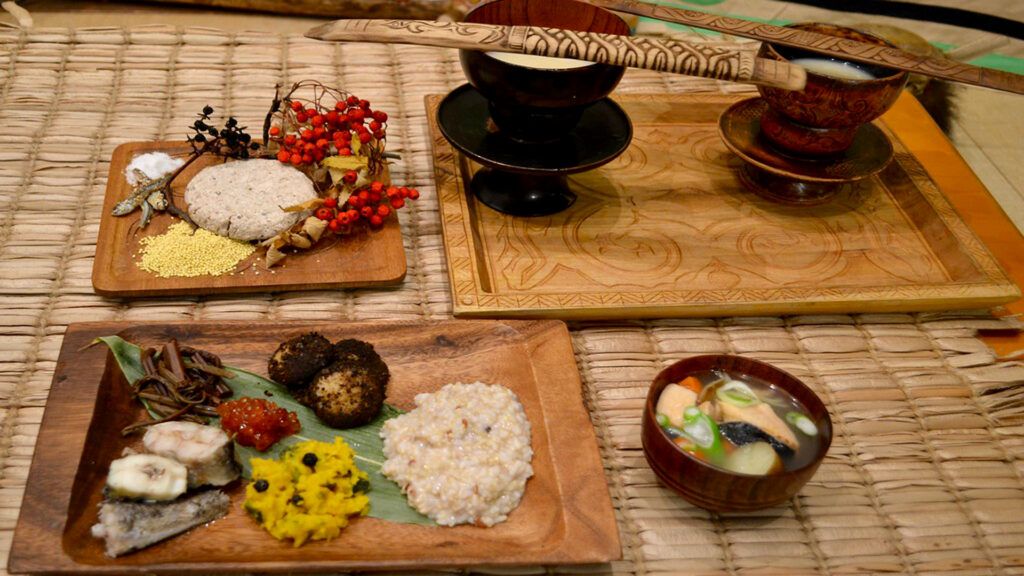
The journey to Akanko Ainu Kotan is a fascinating experience that takes travelers not only into the beautiful nature of Japan but also offers them a deep insight into the rich culture of the Ainu. Akanko Ainu Kotan is a traditional Ainu village located on the shores of Lake Akan in Hokkaido. This village is not only a popular tourist destination but also a vibrant cultural center that preserves and promotes the traditions and lifestyle of the Ainu.
The trip often begins in Sapporo, the largest city in Hokkaido, from where various transport options are available to reach Lake Akan. Most travelers opt for the train ride, which offers a scenic and convenient way to explore rural Hokkaido. From Sapporo, you take the train to Kushiro, a port city on the east coast of Hokkaido. The train ride takes about four hours and passes through breathtaking landscapes, including dense forests, wide fields, and picturesque villages.
Upon arrival in Kushiro, you transfer to a bus that goes directly to Lake Akan. The bus ride takes about two hours, offering further opportunities to enjoy the natural beauty of Hokkaido. Along the way to the lake, you can often spot wildlife such as deer and foxes that inhabit the dense forests and vast plains.
Lake Akan itself is a natural wonder, known for its crystal-clear waters and unique flora and fauna. The lake is of volcanic origin and is surrounded by dense forests and majestic mountains. In winter, the lake is often covered by a thick layer of ice, making it a popular destination for ice sports. In summer, however, the clear waters of the lake invite swimming, boating, and fishing.
On the shores of Lake Akan lies Akanko Ainu Kotan, a traditional Ainu village that resembles a living open-air museum. The village consists of several traditional houses made of wood and reeds, as well as workshops where craftsmen demonstrate their traditional arts and skills. Here, visitors can see how the Ainu create intricate carvings from wood and bone, weave traditional clothing, and build musical instruments.
A highlight of the village is the Ainu Theater, where traditional dances and songs are regularly performed. These performances are not only entertaining but also offer a deep insight into the spiritual and cultural world of the Ainu. Ainu music is particularly fascinating as it uses a variety of traditional instruments, including the Mukkuri (a jaw harp) and the Tonkori (a five-stringed zither).
In addition to cultural performances, the village offers numerous opportunities to sample traditional Ainu cuisine. The Ainu diet is based on the natural resources available to them and includes a variety of game, fish, berries, and herbs. A popular dish is “ohaw,” a hearty soup made with fish or meat and various vegetables. Another traditional dish is “rataskep,” a stew made from wild plants and meat.
A visit to Akanko Ainu Kotan is also an opportunity to learn more about the history and current challenges of the Ainu. The village has a museum that documents the history of the Ainu from the earliest times to the present. Here, visitors learn how the Ainu lived as the “indigenous people of Japan” and what challenges they have faced over the centuries, including the assimilation policies pursued by the Japanese government in the late 19th and early 20th centuries.
A journey to Akanko Ainu Kotan is more than just a trip to a picturesque place; it is a journey into the history and culture of a people who have preserved their identity and traditions despite many adversities. Whether you are interested in the impressive nature, the rich culture, or simply a relaxing getaway from everyday life, a trip to Akanko Ainu Kotan is an unforgettable experience that leaves visitors with lasting impressions and a deeper understanding of Ainu culture.


